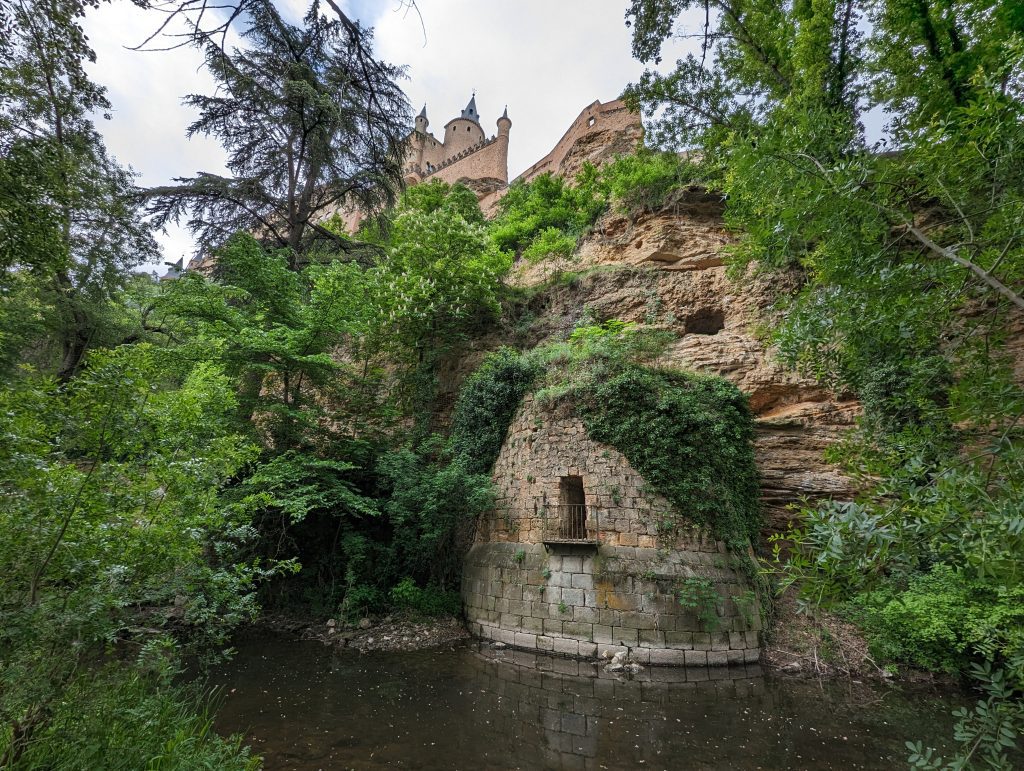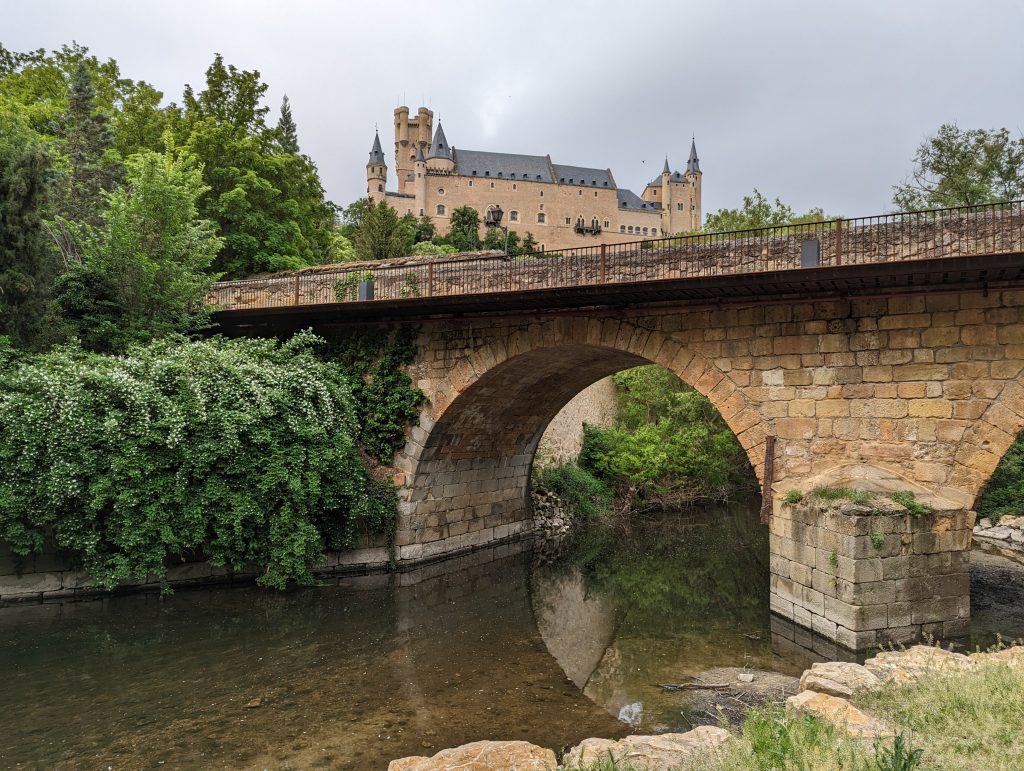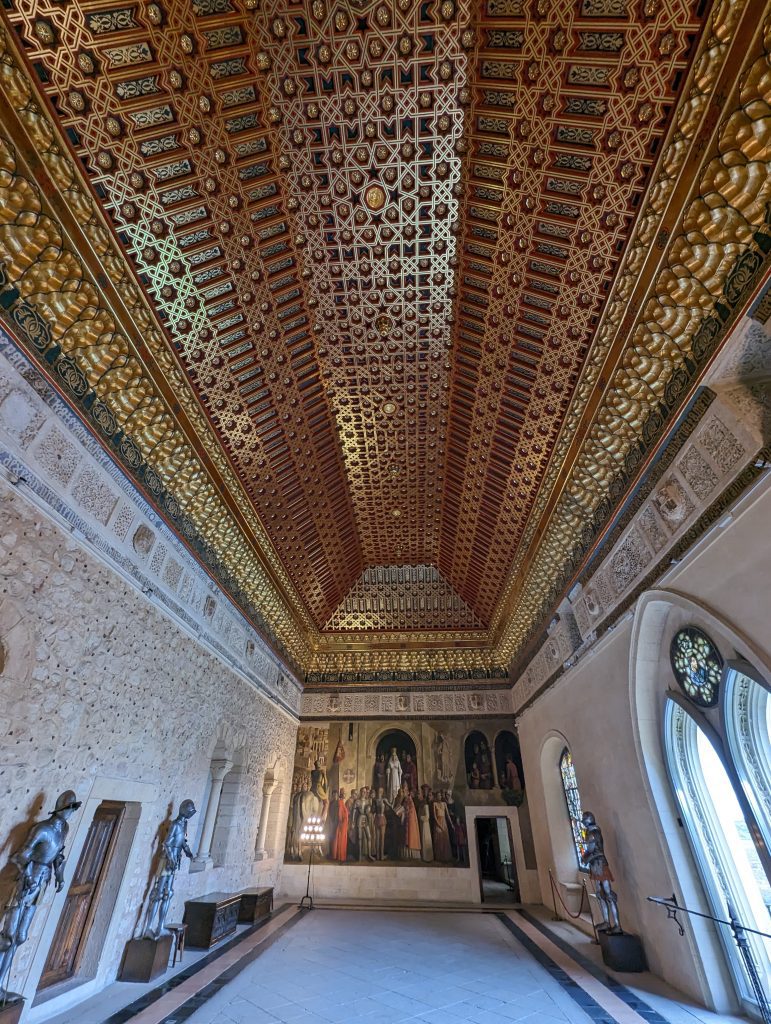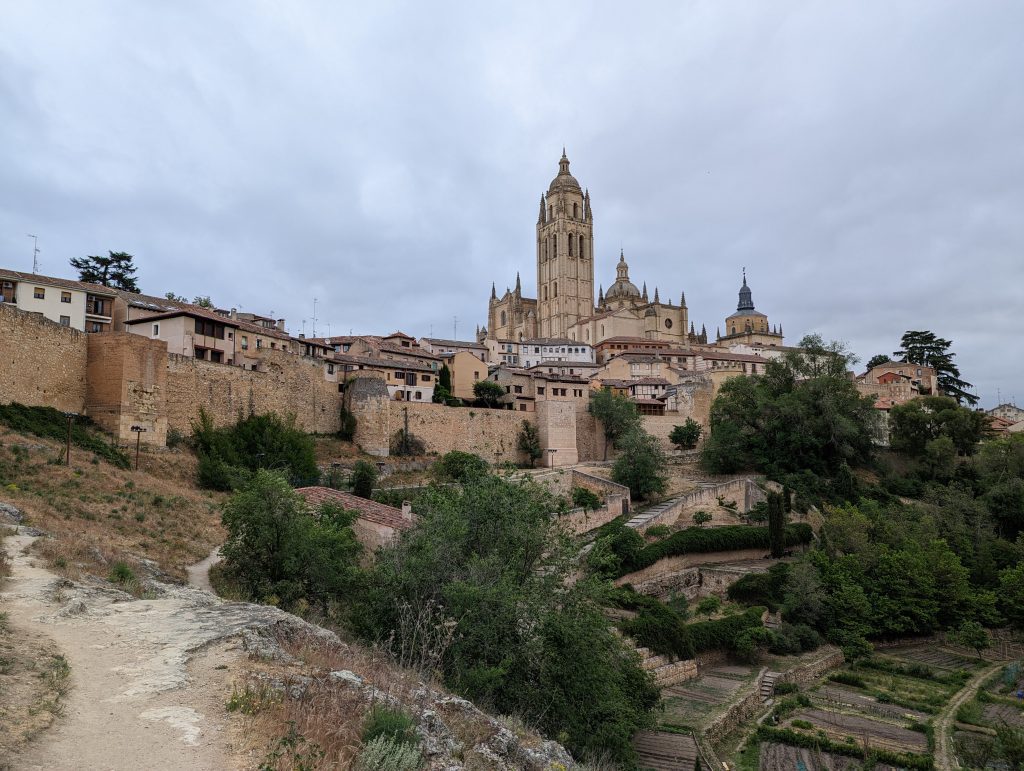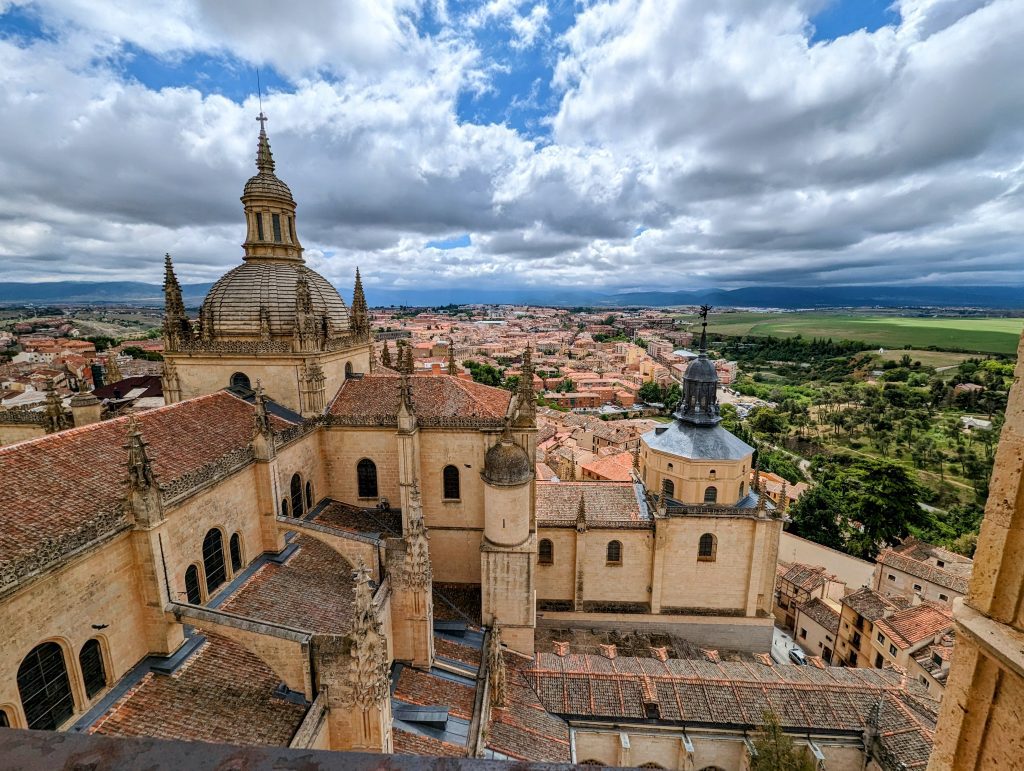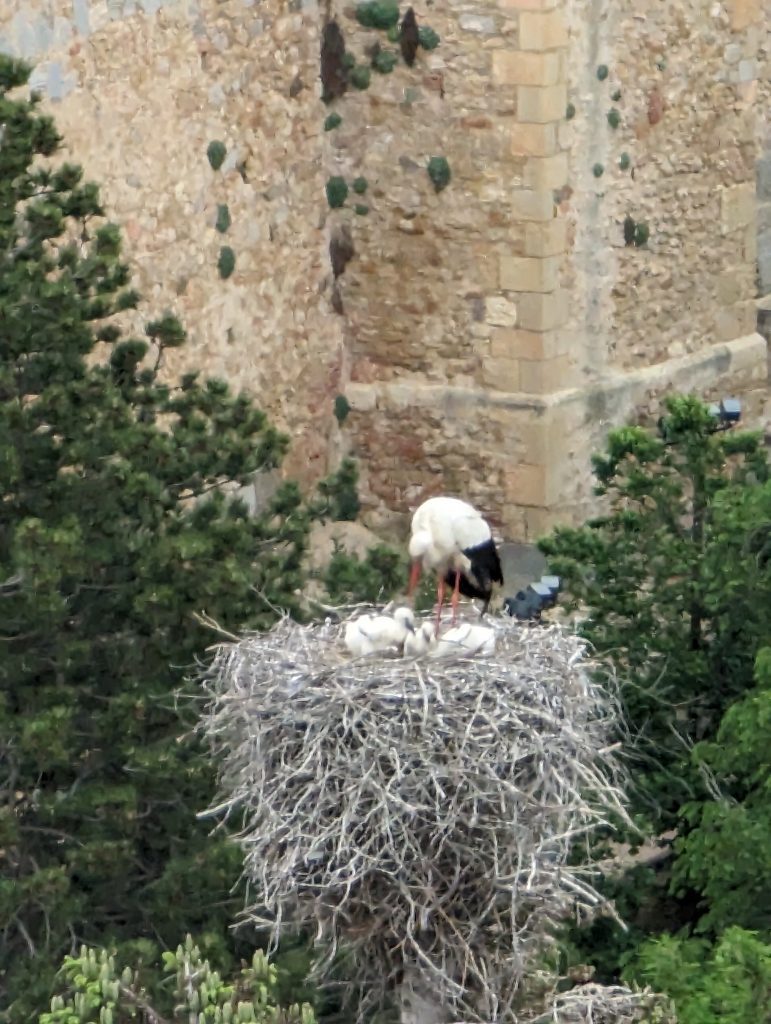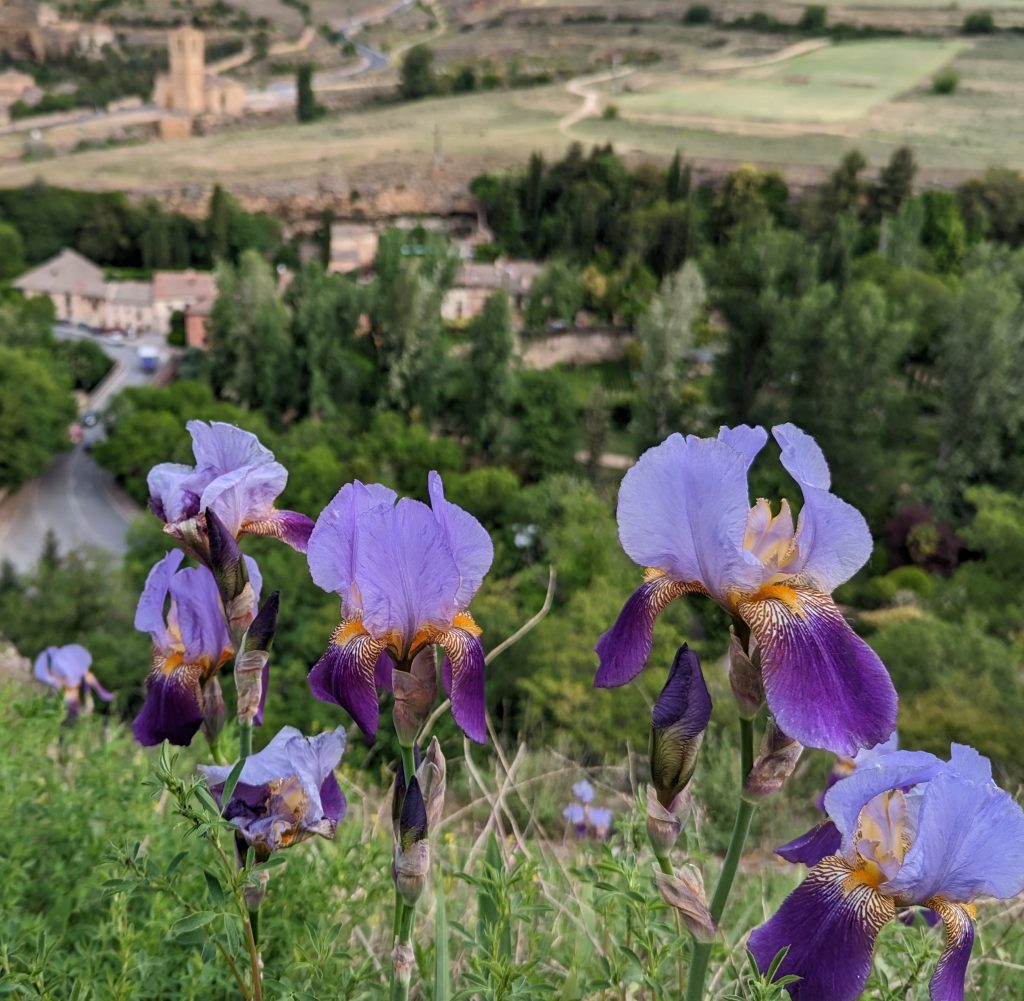This is why lifts were invented
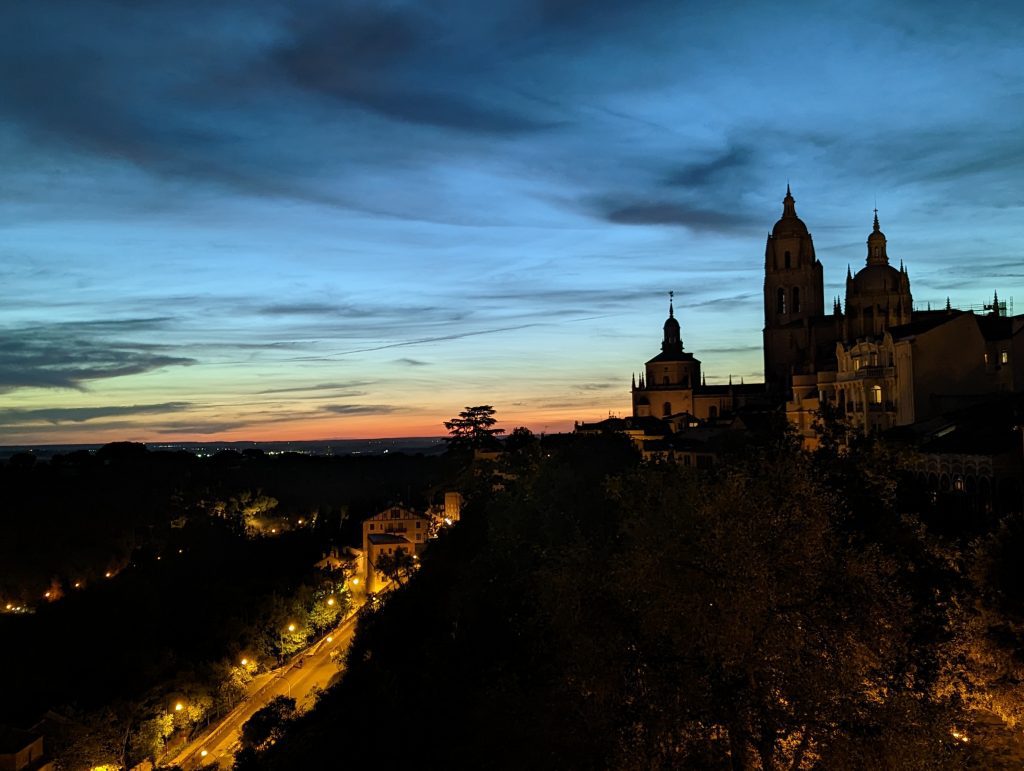
Last night my aim was to photograph the aqueduct lit up at night. I managed to fight off jetlag until the official sunset time of 9:21, but sunset does not mean dark and the minutes ticked by with no lights. I finally fell asleep on the steps beneath the aqueduct and had to call off the plan. I did manage a nice picture of the Alcazar from my hotel room though.
Unfortunately succumbing to jet lag last night did not mean I got to sleep in this morning. So, with an early start, I decided to go exploring beyond the walls. Segovia has a long history and after the Romans it was a royal centre of power and boasts an impressive set of medieval walls. I took a fabulous walk down by a river along the base of the walls with eagles and storks swooping overhead.
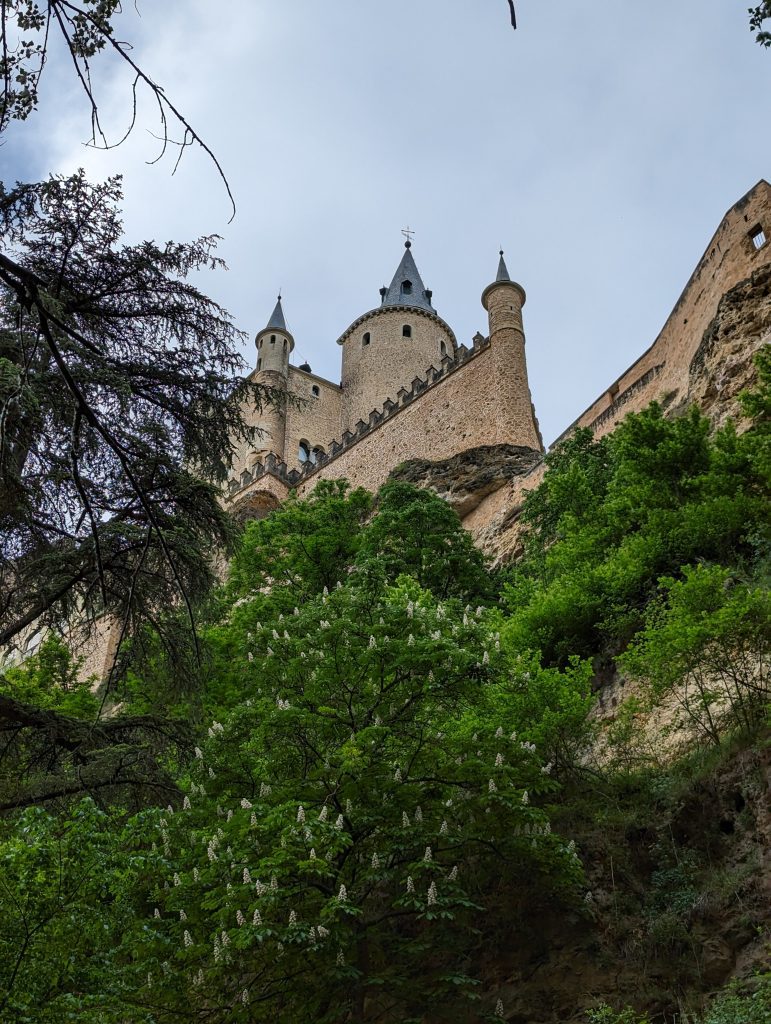
After crossing the river I was reminded why people built castles on top of hills as I climbed about a million steps to get up to the Alcazar. It was now just coming up on 10am so I popped online and bought tickets to the Alcazar. I was literally the first person in and so had the place to myself for ages with a wave of tourists about 20 minutes behind me. The Alczar was a royal palace for many years and is richly an beautifully decorated. The guidebooks all say, presumably because they haven’t been to Germany, that it was the inspiration for the Disney castle – and I have to admit it does a nice line in turrets. I climbed to the top of one for an excellent view of the surrounding countryside an the rest of Segovia.
Being a sucker for punishment I then trundled back through the town to the Cathedral. The Segovia Cathedral was the last gothic cathedral built in Spain. It’s big and dramatic but feels very soul-less. Perhaps that’s because it’s only 500 years old; perhaps it’s because you have to pay to get in, so it’s as much a tourist attraction as a place of worship. The thing it does have is a tower. So up I went.
The tower was for many years the tallest in Spain, and it’s primary purpose was as a belfry. The guide (you can only visit with a guide) gave an interesting explanation of how important bells were in times past as a means of communication – not just for religious purposes but to announce everything from the time to emergencies. The communicator-in-chief was the person who pulled the bell ropes. In this case that was a man who lived with his family just under the top of the tower – that family must have had thighs of steel after climbing up that tower multiple times a day (and all been deaf from the bells).
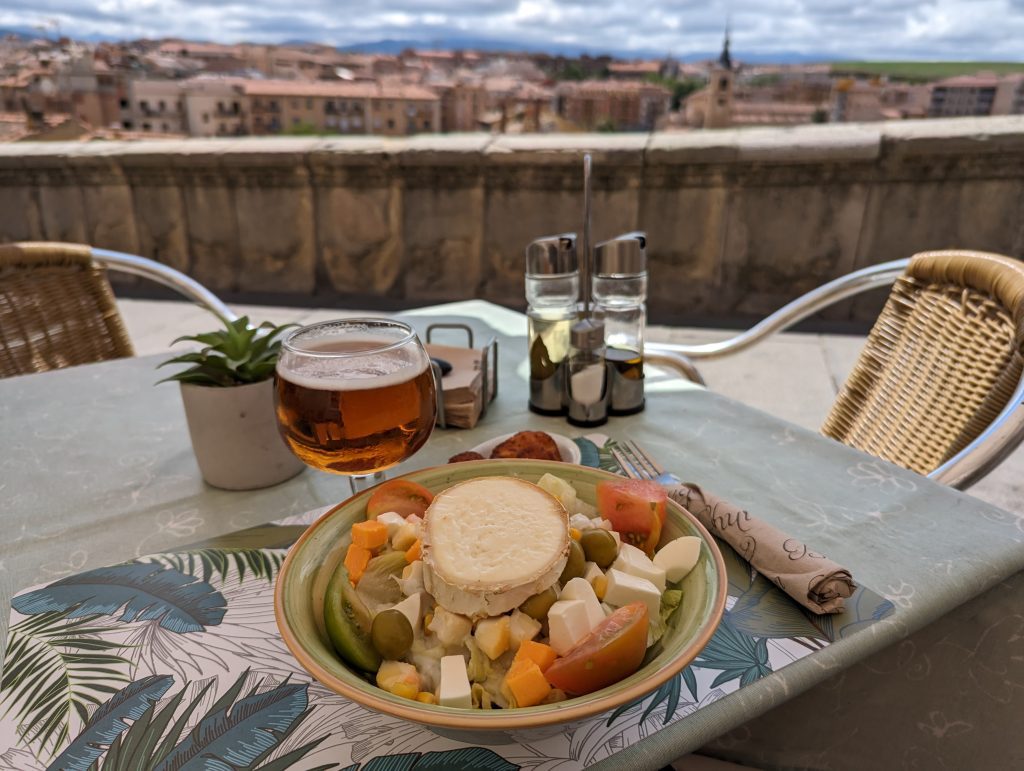
That was enough stair-climbing for the day and I deserved lunch; which turned out to be goat cheese salad on a terrace. My timing was excellent as the first sun, for what has otherwise been a chilly day, popped out just as I sat down to eat.
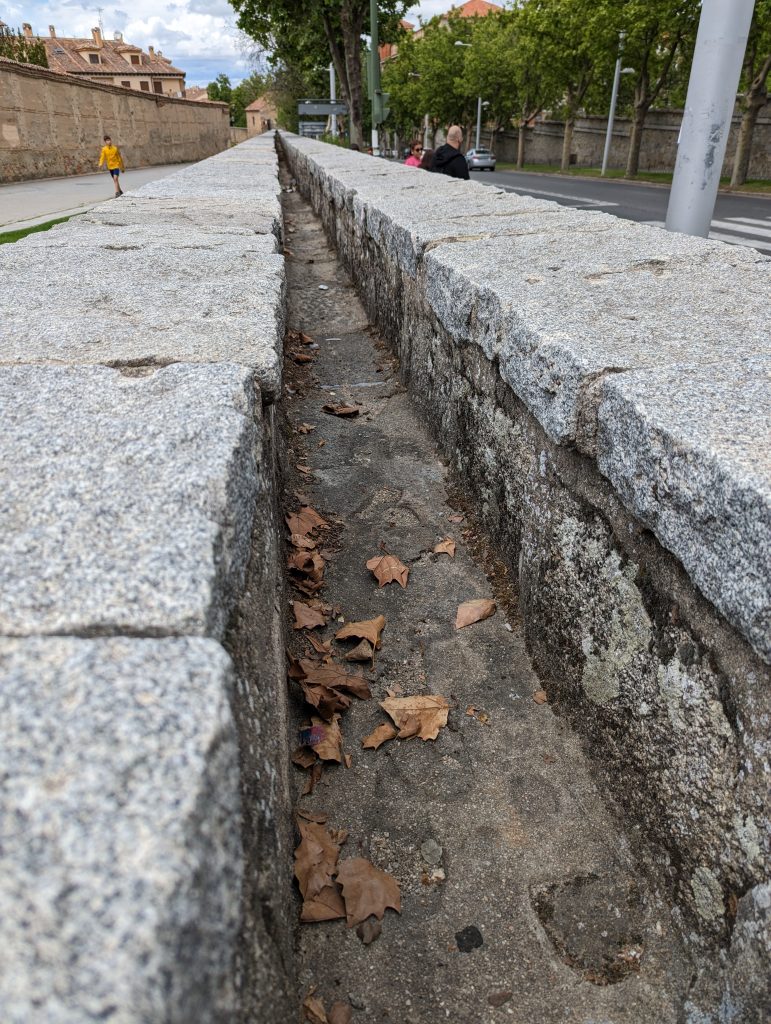
After lunch I decided to follow the aqueduct as far as I could. The water comes from 17km away but is underground for almost all that distance. It pops up above the ground inside the city and is basically a wall with a trench in it for a while until the wall starts getting lifted up on arches that loom higher and higher until they form the famous, towering Aqueduct of Segovia.
The last part of the day I wandered about the town marvelling at all the fabulous old buildings and wondering if the locals even notice them. Then I sat and had dinner under the Aqueduct and watched the locals taking their evening walks.
